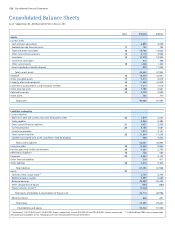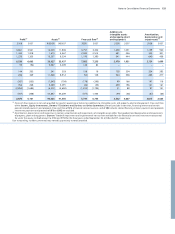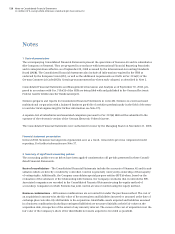Siemens 2008 Annual Report Download - page 226
Download and view the complete annual report
Please find page 226 of the 2008 Siemens annual report below. You can navigate through the pages in the report by either clicking on the pages listed below, or by using the keyword search tool below to find specific information within the annual report.-
 1
1 -
 2
2 -
 3
3 -
 4
4 -
 5
5 -
 6
6 -
 7
7 -
 8
8 -
 9
9 -
 10
10 -
 11
11 -
 12
12 -
 13
13 -
 14
14 -
 15
15 -
 16
16 -
 17
17 -
 18
18 -
 19
19 -
 20
20 -
 21
21 -
 22
22 -
 23
23 -
 24
24 -
 25
25 -
 26
26 -
 27
27 -
 28
28 -
 29
29 -
 30
30 -
 31
31 -
 32
32 -
 33
33 -
 34
34 -
 35
35 -
 36
36 -
 37
37 -
 38
38 -
 39
39 -
 40
40 -
 41
41 -
 42
42 -
 43
43 -
 44
44 -
 45
45 -
 46
46 -
 47
47 -
 48
48 -
 49
49 -
 50
50 -
 51
51 -
 52
52 -
 53
53 -
 54
54 -
 55
55 -
 56
56 -
 57
57 -
 58
58 -
 59
59 -
 60
60 -
 61
61 -
 62
62 -
 63
63 -
 64
64 -
 65
65 -
 66
66 -
 67
67 -
 68
68 -
 69
69 -
 70
70 -
 71
71 -
 72
72 -
 73
73 -
 74
74 -
 75
75 -
 76
76 -
 77
77 -
 78
78 -
 79
79 -
 80
80 -
 81
81 -
 82
82 -
 83
83 -
 84
84 -
 85
85 -
 86
86 -
 87
87 -
 88
88 -
 89
89 -
 90
90 -
 91
91 -
 92
92 -
 93
93 -
 94
94 -
 95
95 -
 96
96 -
 97
97 -
 98
98 -
 99
99 -
 100
100 -
 101
101 -
 102
102 -
 103
103 -
 104
104 -
 105
105 -
 106
106 -
 107
107 -
 108
108 -
 109
109 -
 110
110 -
 111
111 -
 112
112 -
 113
113 -
 114
114 -
 115
115 -
 116
116 -
 117
117 -
 118
118 -
 119
119 -
 120
120 -
 121
121 -
 122
122 -
 123
123 -
 124
124 -
 125
125 -
 126
126 -
 127
127 -
 128
128 -
 129
129 -
 130
130 -
 131
131 -
 132
132 -
 133
133 -
 134
134 -
 135
135 -
 136
136 -
 137
137 -
 138
138 -
 139
139 -
 140
140 -
 141
141 -
 142
142 -
 143
143 -
 144
144 -
 145
145 -
 146
146 -
 147
147 -
 148
148 -
 149
149 -
 150
150 -
 151
151 -
 152
152 -
 153
153 -
 154
154 -
 155
155 -
 156
156 -
 157
157 -
 158
158 -
 159
159 -
 160
160 -
 161
161 -
 162
162 -
 163
163 -
 164
164 -
 165
165 -
 166
166 -
 167
167 -
 168
168 -
 169
169 -
 170
170 -
 171
171 -
 172
172 -
 173
173 -
 174
174 -
 175
175 -
 176
176 -
 177
177 -
 178
178 -
 179
179 -
 180
180 -
 181
181 -
 182
182 -
 183
183 -
 184
184 -
 185
185 -
 186
186 -
 187
187 -
 188
188 -
 189
189 -
 190
190 -
 191
191 -
 192
192 -
 193
193 -
 194
194 -
 195
195 -
 196
196 -
 197
197 -
 198
198 -
 199
199 -
 200
200 -
 201
201 -
 202
202 -
 203
203 -
 204
204 -
 205
205 -
 206
206 -
 207
207 -
 208
208 -
 209
209 -
 210
210 -
 211
211 -
 212
212 -
 213
213 -
 214
214 -
 215
215 -
 216
216 -
 217
217 -
 218
218 -
 219
219 -
 220
220 -
 221
221 -
 222
222 -
 223
223 -
 224
224 -
 225
225 -
 226
226 -
 227
227 -
 228
228 -
 229
229 -
 230
230 -
 231
231 -
 232
232 -
 233
233 -
 234
234 -
 235
235 -
 236
236 -
 237
237 -
 238
238 -
 239
239 -
 240
240 -
 241
241 -
 242
242 -
 243
243 -
 244
244 -
 245
245 -
 246
246 -
 247
247 -
 248
248 -
 249
249 -
 250
250 -
 251
251 -
 252
252 -
 253
253 -
 254
254 -
 255
255 -
 256
256 -
 257
257 -
 258
258 -
 259
259 -
 260
260 -
 261
261 -
 262
262 -
 263
263 -
 264
264 -
 265
265 -
 266
266 -
 267
267 -
 268
268 -
 269
269 -
 270
270 -
 271
271 -
 272
272 -
 273
273 -
 274
274 -
 275
275 -
 276
276 -
 277
277 -
 278
278 -
 279
279 -
 280
280 -
 281
281 -
 282
282 -
 283
283 -
 284
284 -
 285
285 -
 286
286 -
 287
287 -
 288
288 -
 289
289 -
 290
290 -
 291
291 -
 292
292 -
 293
293 -
 294
294 -
 295
295 -
 296
296 -
 297
297 -
 298
298 -
 299
299 -
 300
300 -
 301
301 -
 302
302 -
 303
303 -
 304
304 -
 305
305 -
 306
306 -
 307
307 -
 308
308 -
 309
309 -
 310
310 -
 311
311 -
 312
312 -
 313
313 -
 314
314 -
 315
315 -
 316
316 -
 317
317 -
 318
318 -
 319
319 -
 320
320 -
 321
321 -
 322
322 -
 323
323 -
 324
324 -
 325
325 -
 326
326 -
 327
327 -
 328
328 -
 329
329 -
 330
330
 |
 |
130 Notes to Consolidated Financial Statements
(in millions of €, except where otherwise stated and per share amounts)
applied as their recoverable amount. The assets’ value in use is measured by discounting their estimated future
cash ows. If there is an indication that the reasons which caused the impairment no longer exist, Siemens
would consider the need to reverse all or a portion of the impairment.
The Company’s property, plant and equipment and other intangible assets to be disposed of are recorded at the
lower of carrying amount or fair value less costs to sell and depreciation is ceased.
Discontinued operations – Discontinued operations are reported when a component of an entity comprising
operations and cash ows that can be clearly distinguished, operationally and for nancial reporting purposes,
from the rest of the entity is classied as held for sale or has been disposed of, if the component either (a) repre-
sents a separate major line of business or geographical area of operations or (b) is part of a single co-ordinated
plan to dispose of a separate major line of business or geographical area of operations or (c) is a subsidiary
acquired exclusively with a view to resale.
Income taxes – The Company applies IAS 12, Income Taxes. Under the liability method of IAS 12, deferred tax
assets and liabilities are recognized for the future tax consequences attributable to differences between the
nancial statement carrying amounts of existing assets and liabilities and their respective tax bases. The effect
on deferred tax assets and liabilities of a change in tax rates is recognized in the income statement, unless
related to items directly recognized in equity, in the period the new laws are substantively enacted. Deferred tax
assets are recognized to the extent that it is probable that future taxable income will be available against which
the deductible temporary differences, unused tax losses and unused tax credits can be utilized.
Inventories – Inventory is valued at the lower of acquisition or production cost or net realizable value, cost
being generally determined on the basis of an average or rst-in, rst-out method. Production costs comprise
direct material and labor and applicable manufacturing overheads, including depreciation charges. Net realiz-
able value is the estimated selling price in the ordinary course of business, less the estimated costs of comple-
tion and selling expenses.
Provisions – A provision is recognized in the balance sheet when the Company has a present legal or construc-
tive obligation as a result of a past event, it is probable that an outow of economic benets will be required to
settle the obligation and a reliable estimate can be made of the amount of the obligation. If the effect is material,
provisions are recognized at present value by discounting the expected future cash ows at a pre-tax rate that
reects current market assessments of the time value of money. Provisions for onerous contracts are measured
at the lower of the expected cost of fullling the contract and the expected cost of terminating the contract.
Additions to provisions are generally recognized in the income statement. The present value of legal obligations
associated with the retirement of property, plant and equipment (asset retirement obligations) that result from
the acquisition, construction, development or normal use of an asset is added to the carrying amount of the
associated asset. The additional carrying amount is depreciated over the life of the asset. If the asset retirement
obligation is settled for other than the carrying amount of the liability, the Company recognizes a gain or loss on
settlement.
Restructuring charges – are recognized in the period incurred and when the amount is reasonably estimable.
Termination benets are recognised as a liability and an expense when the entity is demonstrably committed,
through a formal termination plan, to either provide termination benets as a result of an offer made in order
to encourage voluntary redundancy or terminate employment before the normal retirement date.
